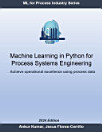Practical Applications of Bayesian Reliability
เกี่ยวกับ eBook เล่มนี้
This self-contained reference provides fundamental knowledge of Bayesian reliability and utilizes numerous examples to show how Bayesian models can solve real life reliability problems. It teaches engineers and scientists exactly what Bayesian analysis is, what its benefits are, and how they can apply the methods to solve their own problems. To help readers get started quickly, the book presents many Bayesian models that use JAGS and which require fewer than 10 lines of command. It also offers a number of short R scripts consisting of simple functions to help them become familiar with R coding.
Practical Applications of Bayesian Reliability starts by introducing basic concepts of reliability engineering, including random variables, discrete and continuous probability distributions, hazard function, and censored data. Basic concepts of Bayesian statistics, models, reasons, and theory are presented in the following chapter. Coverage of Bayesian computation, Metropolis-Hastings algorithm, and Gibbs Sampling comes next. The book then goes on to teach the concepts of design capability and design for reliability; introduce Bayesian models for estimating system reliability; discuss Bayesian Hierarchical Models and their applications; present linear and logistic regression models in Bayesian Perspective; and more.
- Provides a step-by-step approach for developing advanced reliability models to solve complex problems, and does not require in-depth understanding of statistical methodology
- Educates managers on the potential of Bayesian reliability models and associated impact
- Introduces commonly used predictive reliability models and advanced Bayesian models based on real life applications
- Includes practical guidelines to construct Bayesian reliability models along with computer codes for all of the case studies
- JAGS and R codes are provided on an accompanying website to enable practitioners to easily copy them and tailor them to their own applications
Practical Applications of Bayesian Reliability is a helpful book for industry practitioners such as reliability engineers, mechanical engineers, electrical engineers, product engineers, system engineers, and materials scientists whose work includes predicting design or product performance.
เกี่ยวกับผู้แต่ง
YAN LIU, PHD, is Principal Reliability Engineer at Medtronic PLC, (USA). She is a certified Master Black Belt at Medtronic and has 12 years of working and consulting experience on reliability engineering and design for Six Sigma.
ATHULA I. ABEYRATNE, PHD, is Senior Principal Statistician and a certified DRM Black Belt at Medtronic PLC, (USA), where he has provided statistical consulting, training, data analyses, and modelling for 27 years.





